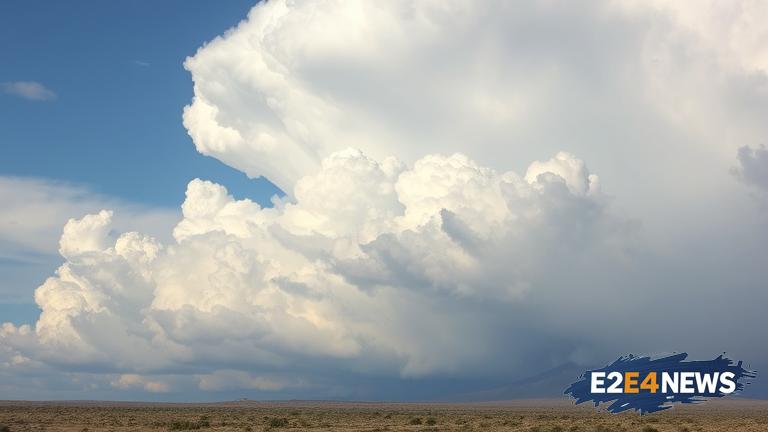Cloud seeding, a form of weather modification, has been employed in various regions, including Arizona and Texas, to augment precipitation and alleviate drought conditions. This technique involves injecting substances such as silver iodide or dry ice into clouds to enhance the formation of ice crystals, which in turn can lead to increased rainfall or snowfall. In Arizona, cloud seeding operations have been conducted for several decades, with the goal of boosting precipitation in the state’s mountainous regions. Similarly, in Texas, cloud seeding programs have been implemented to enhance rainfall in the western and central parts of the state. The primary objective of these operations is to increase the amount of precipitation that reaches the ground, thereby helping to replenish water sources and mitigate the effects of drought. Cloud seeding can be achieved through various methods, including the use of aircraft, ground-based generators, or rockets to disperse the seeding material. The effectiveness of cloud seeding is still a topic of debate, with some studies suggesting that it can lead to significant increases in precipitation, while others have found little to no impact. Despite the uncertainty, many states and countries continue to invest in cloud seeding operations, citing the potential benefits to agriculture, water supply, and ecosystem health. In Arizona, the cloud seeding program is managed by the Arizona Department of Water Resources, which works in conjunction with the National Weather Service to identify suitable seeding opportunities. In Texas, the Texas Department of Licensing and Regulation oversees the cloud seeding program, which is funded by a combination of state and federal funds. The use of cloud seeding has also raised concerns about potential environmental impacts, such as the introduction of foreign substances into the atmosphere and the potential disruption of natural weather patterns. However, proponents of cloud seeding argue that the benefits outweigh the risks, particularly in regions where drought is a persistent and debilitating issue. As the global climate continues to evolve, the use of cloud seeding and other weather modification techniques is likely to become increasingly important, particularly in regions where water scarcity is a major concern. In addition to its potential benefits for precipitation enhancement, cloud seeding may also have applications in hail suppression, fog dispersion, and wind modification. Overall, the use of cloud seeding in Arizona and Texas represents a proactive approach to managing weather-related risks and promoting water security in these regions. Further research is needed to fully understand the effects of cloud seeding and to optimize its use in various contexts. By continuing to invest in cloud seeding operations and research, states like Arizona and Texas can help to ensure a more resilient and sustainable water future.
